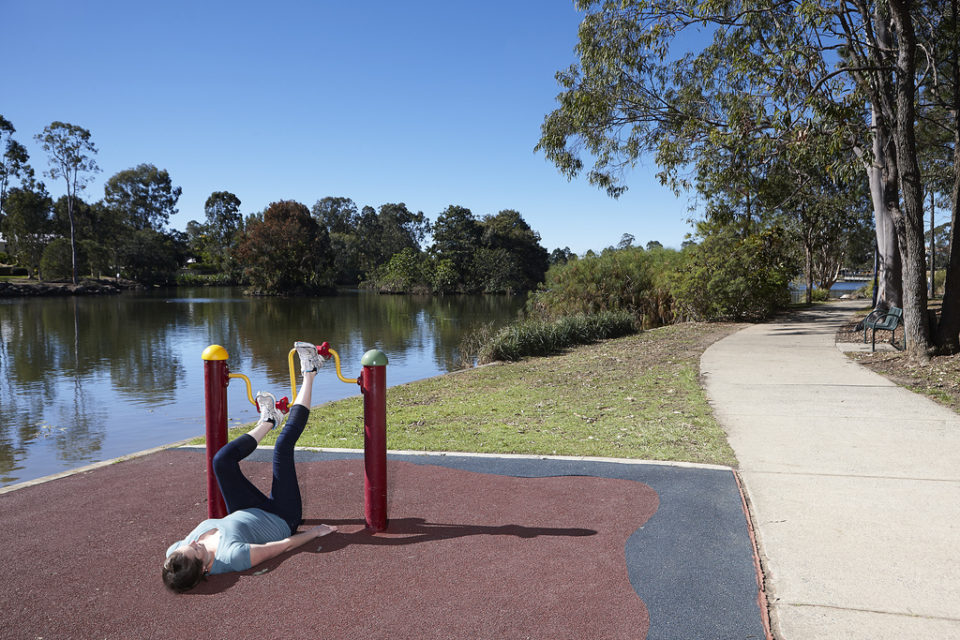New Curriculum Joins Public Spaces and Healthy Communities Programs

We were in southern Indiana a few weeks ago in a county that is, at first glance, not for want of green space. In fact, natural spaces abound. Dominated by a significant swath of the Hoosier National Forest, it is a burgeoning tourism destination and an increasingly popular place for people seeking some solitude to settle down and enjoy the great outdoors. There is only one problem. Virtually all of the green spaces in the entire county are owned either privately or by the state or federal government. The result? The county/municipality owns only THREE acres of parkland.
Why might this be worrisome? Look no further than CountyHealthRankings.org. Consider ‘access to exercise opportunities’ which “measures the percentage of individuals in a county who live reasonably close to a location for physical activity. Locations for physical activity are defined as parks or recreational facilities.” In rural areas, these parks and facilities need to be within three miles of population centers. While state and federal lands are considered an exercise opportunity, we see in Indiana that living in a relatively rural area is negatively correlated to access to exercise opportunities. This means that this county is not atypical. Rural residents, compared to their more urban counterparts, have less access to exercise opportunities. When access is constrained, we observe lower levels of physical activity and there is some correlation with obesity as well. However, access is not correlated to physically unhealthy days or mentally unhealthy days. Why? Because access is only part of the story. Access (supply of exercise opportunities) needs to be met by actual use (demand)! If these opportunities are offered, but not used, then the positive effects are nullified. When we examine lack of use (physical inactivity), it is highly correlated with the number of physically unhealthy days AND mentally unhealthy days, in addition to obesity rates. Evidence that active living strategies matter.
The other side of the coin in this discussion is food. Diet AND exercise has been the mantra of health professionals for decades. In terms of healthy eating, CountyHealthRankings.org has estimated a ‘Food Environment Index’ which is comprised of a limited access to healthy foods measure (“estimates the percentage of the population that is low income and does not live close to a grocery store”) and a food insecurity measure (“estimates the percentage of the population who did not have access to a reliable source of food during the past year”.) Like exercise, the food environment is highly correlated with the number of physically unhealthy days or mentally unhealthy days. People living in a robust food environment generally experience fewer unhealthy days, be they associated with physical or mental health. And, just as access to exercise opportunities is not sufficient, data for Indiana suggest that the food environment is not correlated with obesity rates. People need to not only have access to healthy food, but they need to make healthy choices.
These findings undergird the need for Extension programming that is focused on coupling research-based education for community members with a highly effective planning platform that promotes active living and healthy eating through placemaking. Purdue Extension’s new Enhancing the Value of Public Spaces: Creating Healthy Communities program builds on the existing and highly successful Community Development Signature Program to expand education and implementation efforts linking public spaces with environmental, health and wellness benefits. The new curriculum modules include applications of community design coupled with information resources, case studies and strategies to enhance food access and active living through public spaces improvements and community-based programs.
An integrated team consisting primarily of Extension professionals from Health and Human Sciences (including the Nutrition Education Program), Community Development, IL-IN Sea Grant, and Agriculture and Natural Resources identified a sustainable way to enhance the quality of life in Indiana using a science-driven, participatory approach. The curriculum is designed for use by decision makers and local leaders with oversight and management of community public spaces. The program combines data collection and analysis with inclusive public deliberation to guide the design of a high-quality action plan that can result in sustainable and impactful improvements for public spaces. The new Enhancing program engages participants in analyzing current community assets through the lens of the Socio-ecological Model and identifying strategies to guide policy, systems and environmental changes relevant to promoting healthy communities through high value public spaces.
The new program format and materials are currently being piloted in three communities this spring. Terre Haute’s planning effort is focusing on the city’s parks and recreation master plan update. Gaston’s plan will support public space improvements, including a new community center, and access to greenway trails. Connersville is focusing their effort on public space improvements and placemaking efforts in their downtown. The local teams that are piloting the new Enhancing the Value of Public Spaces – Creating Healthy Communities program include:
Terre Haute Team
Kristi Whitacre
Community Development Educator/County Director, Vigo County
Allison Finzel
NEP Community Wellness Coordinator, Vigo County
Jay Christiansen
Health and Human Sciences Educator, Vigo County
Gaston Team
Chelsie Jaramillo
NEP Community Wellness Coordinator, Delaware County
Kortney Zimmerman
NEP Community Wellness Coordinator, Delaware County
Molly Hunt
Health and Human Sciences Educator, Delaware County
Joel Brumley
4-H Youth Development Educator/County Director, Delaware County
Mark Carter
Agriculture and Natural Resources Educator, Delaware County
Connersville Team
Rebecca Marvel
NEP Community Wellness Coordinator, Fayette County
Vickie Crowe
Health and Human Sciences/4-H Youth Development Educator, Fayette County
Tiffanie Stone
4-H Youth Development, Agriculture and Natural Resources Educator/County Director, Fayette County
Local Extension educators will complete training in September to lead sessions in their communities and the program will be available for statewide deployment this fall. Contact your local Extension educator if your community is interested in participating in this program.
Program development team:
Michael Wilcox, Melissa Maulding, Kara Salazar, Lisa Graves, Blake Connolly, Dan Walker
Michael Wilcox is the Extension Community Development assistant program leader and Kara Salazar is the Extension specialist for Enhancing the Value of Public Spaces.



